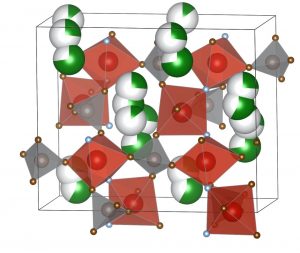Titanium-containing batteries for cheaper mass-market applications
|Titanium is a readily available, safe, and cheap element for the construction of potassium-ion batteries. Despite the low potential issues, a research collaboration involving Italian and Russian institutions, tested a titanium-based electrode with outstanding results.

The rapid progress in the mass-market applications of batteries requires the development of new technologies. Currently, lithium and cobalt are between the most applied elements for the construction of battery electrodes. However, they do not satisfy the criteria of abundance and geographic availability. Those elements are rare, expensive and located in few geographical areas, thus resulting in high and unstable prices.
Recently, several proposals have been advanced in the search for alternatives, and potassium-ion batteries, also called K-ion, are between the prime candidates to replace the current Li-ion technology. These batteries make use of cheaper and readily available elements like potassium instead of lithium. At the same time, cobalt can be replaced by iron, manganese, or titanium, as in the present work jointly led by Prof. Evgeny Antipov from Lomonosov Moscow State University and Prof. Artem Abakumov from the Skolkovo Institute of Science and Technology (Skoltech) in Moscow.
Titanium can be mined worldwide, and basic titanium-containing chemicals are neither hazardous nor toxic but, despite these features, the main issue is its low potential. Nevertheless, this work reported a promising titanium-based positive electrode for K-ion batteries. This electrode is made of KTiPO4F, and its crystalline structure allows for a potential approaching 3.6-3.7 V (vs. K+/K). This is an extraordinary result for a titanium-based electrode.
A variety of experiments allowed scientists to define the properties of this battery, and between them, operando X-ray diffraction (XRD) at the CERIC Italian Partner Facility at Elettra Sincrotrone Trieste. This technique was executed at the MCX beamline with the contribution of Dr. Jasper Plaisier, head of the beamline, and Dr. Mattia Gaboardi, which assisted in the experiments and with the data processing. CERIC user, Prof. Stanislav Fedotov from Skoltech, who initiated research on KTiPO4F, was granted open access to this technique, which is commonly used to identify the atomic and molecular structure of materials by measuring the angles and the intensities of the diffracted X-rays.
This study, in which structural changes in the electrode material were followed through the operando technique, highlighted attractive electrochemical performances such as cycling stability with no capacity fading. The combination of all the features might well suit in high-power and large-scale applications such as household energy storage and electric vehicles.
There’s a growing interest in developing solutions for electric mobility, smart grids, and energy storage. By employing the numerous techniques available at CERIC, our users are providing knowledge and solutions that one day will power houses and cars.



